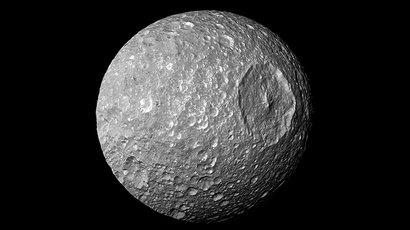Cosmic Chaos: Turbulence prevents cluster galaxies from forming stars (PHOTO)

A group of international scientists have discovered that turbulence might keep the temperature inside cluster galaxies too hot to allow for cooling needed to form stars.
Using NASA’s Chandra X-ray Observatory, scientists think they have solved the space riddle as to why the largest objects in space – galaxy clusters – are not centers of prodigious amounts of stars. They found that while galaxy clusters are held together by gravity and contain hundreds of thousands of individual galaxies immersed in gas with temperatures of millions of degrees, many of them don’t cool enough to form stars.
READ MORE:Scientists: North can become South in less than 100 years
“We knew that somehow the gas in clusters is being heated to prevent it cooling and forming stars. The question was exactly how,” said Irina Zhuraveleva of Stanford University, who led the study, in a statement by NASA. “We think we may have found evidence that the heat is channeled from turbulent motions, which we identify from signatures recorded in X-ray images.”

The hot gas glows brightly in X-ray light, which was captured at the Chandra Observatory. Prior studies showed that supermassive black holes centered in these galaxy clusters pump vast quantities of energy in jets of particles, and these in turn create cavities in the hot gas. The cavities have been picked up by Chandra and other X-ray telescopes, but Zuraveleva’s team figured out the interaction of the cavities with gas must be creating turbulence and maintaining hot temperatures for billions of years.
READ MORE:‘Something is not right’ with Saturn’s ‘Death Star’: Life-friendly underground ocean in Mimas?
Scientists studied two enormous galaxy clusters – Perseus and Virgo. Their observations gave them data to measure fluctuations in the density of the gas, and to estimate the amount of turbulence in the gas.
#Space: over 1000 #galaxies from the Virgo cluster. This view is humbling… http://t.co/qcIqaT7lDC via @apodpic.twitter.com/xJuoVsqYa6
— Maxime Duprez (@maximaxoo) September 16, 2014
“Any gas motions from the turbulence will eventually decay, releasing their energy to the gas,” said co-author Eugene Churazov of the Max Planck Institute for Astrophysics. “But the gas won’t cool if turbulence is strong enough and generated often enough.”
What they discovered is a “feedback” model in which the galaxy cluster – when the gas cools – “falls toward the black hole at an accelerating rate, causing the black hole to increase the output of its jets,” according to NASA.
Here we are interested in offsets between the hot gas, galaxies, and dark matter in mergers of galaxy clusters.
— Astrotweeps: Doug (@astrotweeps) October 27, 2014
READ MORE:Milky Way space pirate bullies nearby dwarf galaxies
Scientists say the continued heating could come about from a merger between two galaxy clusters, which would produce turbulence, but the black hole theory is the main source.
“Our work gives us an estimate of how much turbulence is generated in these clusters,” said Alexander Schekochinhin of the University of Oxford.“From what we’ve determined so far there’s enough turbulence to balance the cooling of the gas.”














